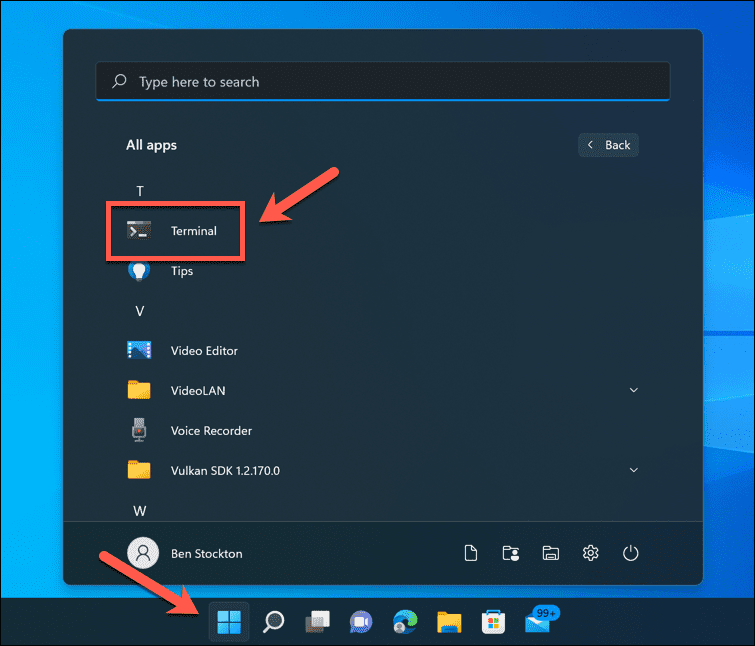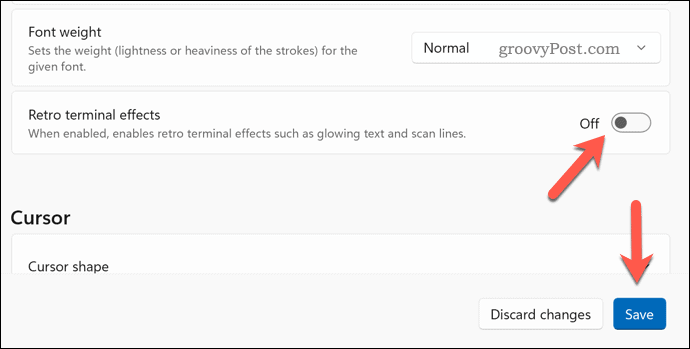How to Customize the Windows Terminal App

Want to customize the Windows Terminal app on Windows 11? You can do it via the Settings menu in the app itself. This guide will explain how.
Windows 11 system apps like Windows Terminal use a default theme—every app looks the same. What do you do if you want to switch things up,?
You can customize the Windows Terminal app with custom fonts and text settings, but you may want to make deeper changes. Thankfully, Windows Terminal allows you to customize its appearance with new color schemes, background images, and special retro effects.
This guide will show you how to change the theme in Windows Terminal.
How to Change the Windows Terminal Background Image
Sick of the default black (or blue) background in Windows Terminal? You can apply a new background image to personalize each new Terminal tab you open.
To change the background image in Windows Terminal:
- Open the Start menu and press the Terminal app icon to launch it.


- In the Windows Terminal window, press the downward arrow and select Settings.

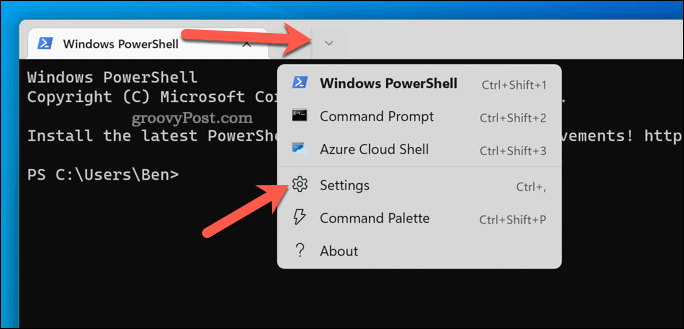
- Select your Terminal profile (eg. Windows PowerShell) on the left.
- On the right, press Appearance.

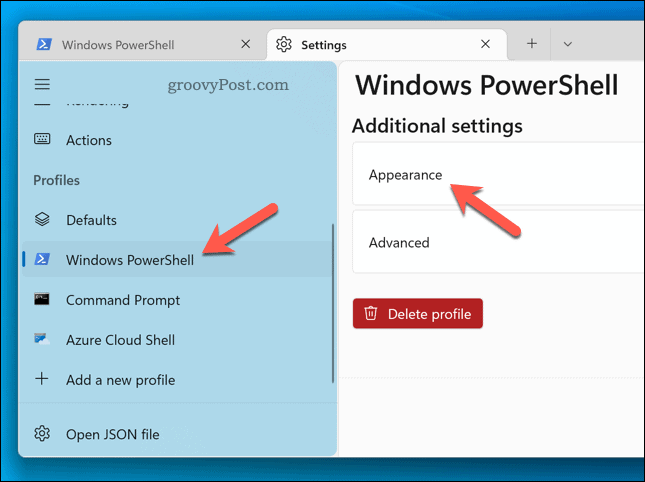
- Scroll through to the Background image path section and press Browse.
- Locate your preferred image and select it.
- Alternatively, press the Use desktop wallpaper checkbox to use your current desktop background as the background image for Windows Terminal.

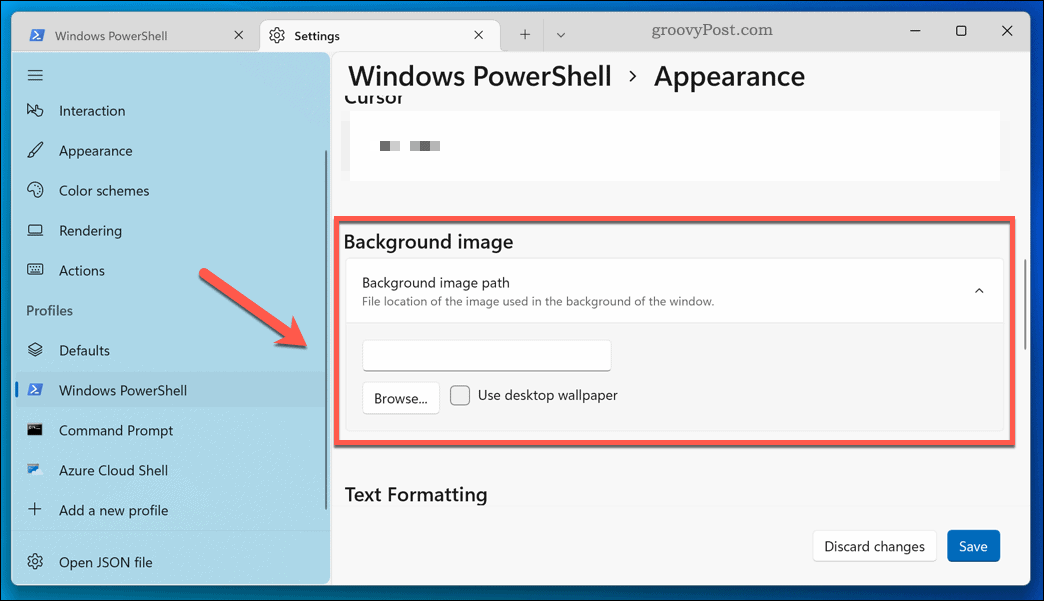
- In the Background image stretch mode section, select how you want the image to appear (eg. Fill to fill the entire window).
- Under Background image alignment, choose how you want the image to align inside your window.
- If you want to select a different opacity for your background image, set a new value in the Background image opacity section.
- Press Save to apply your choices.

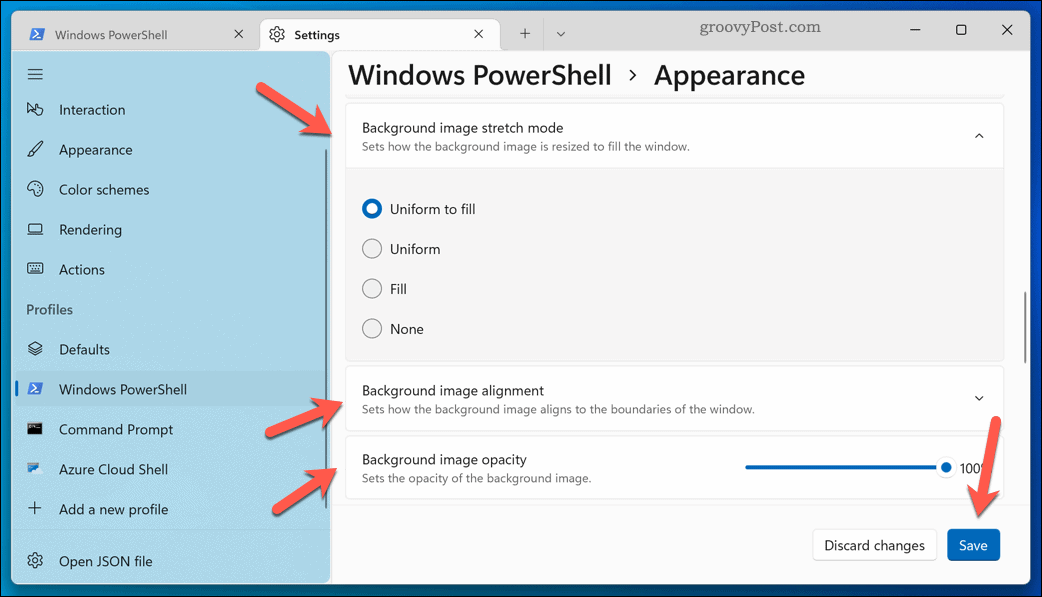
The changes will apply immediately. If your background image doesn’t appear, relaunch Windows Terminal or apply a different image.
How to Change Color Scheme in Windows Terminal
Windows Terminal has a selection of custom color schemes that you can apply to customize how it looks. This affects the text color, window shading, and more.
To change the Windows Terminal color scheme:
- Open the Start menu and select Terminal.


- Press the downward arrow > Settings.


- In Settings, choose your profile (eg. PowerShell) on the left.
- On the right, press Appearance.


- In the Color scheme drop-down menu, select a new color scheme option.
- Click Save to apply the change.

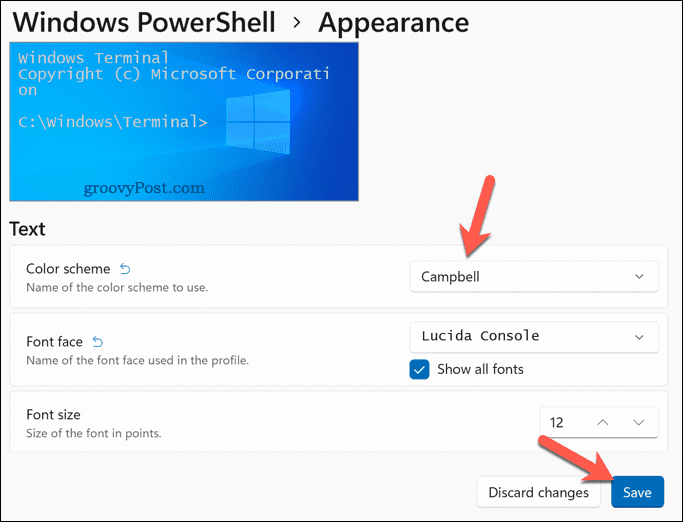
Repeat the steps above if you want to change to another color scheme at any point. If you’re unhappy with any of the color schemes, you can create your own using the Windows Terminal documentation.
Using Retro Terminal Effects in Windows Terminal
If you fancy a nostalgia trip to the days of green CRT screens and blinking cursors, you can apply a retro terminal effect in Windows Terminal.
This will add glowing text and CRT-style gridlines to your Terminal window. It isn’t useful—but it is a bit of fun!
To apply retro terminal effects in Windows Terminal:
- Open the Terminal app via the Start menu.


- In the Terminal window, select the downward arrow > Settings.


- On the left, select your Terminal profile (eg. PowerShell).
- Press Appearance on the right.


- Click the Retro terminal effects slider to activate it.
- Press Save to apply the settings change.


Your terminal window should update automatically to show the effect. If you want to switch it off, repeat the steps above and click the Retro terminal effects slider to place it in the off position.
Making Changes to Windows 11
Using the steps above, you can quickly change the theme in Windows Terminal. Windows 11 system apps and settings are easily customizable—you can customize the Start menu to suit your needs, for instance.
Is your PC a few years old? You can optimize Windows 11 for older PCs if you know how to. If Windows 11 keeps crashing, however, you’ll need to troubleshoot the problem (or consider upgrading to a new PC).
Leave a Reply
Leave a Reply

